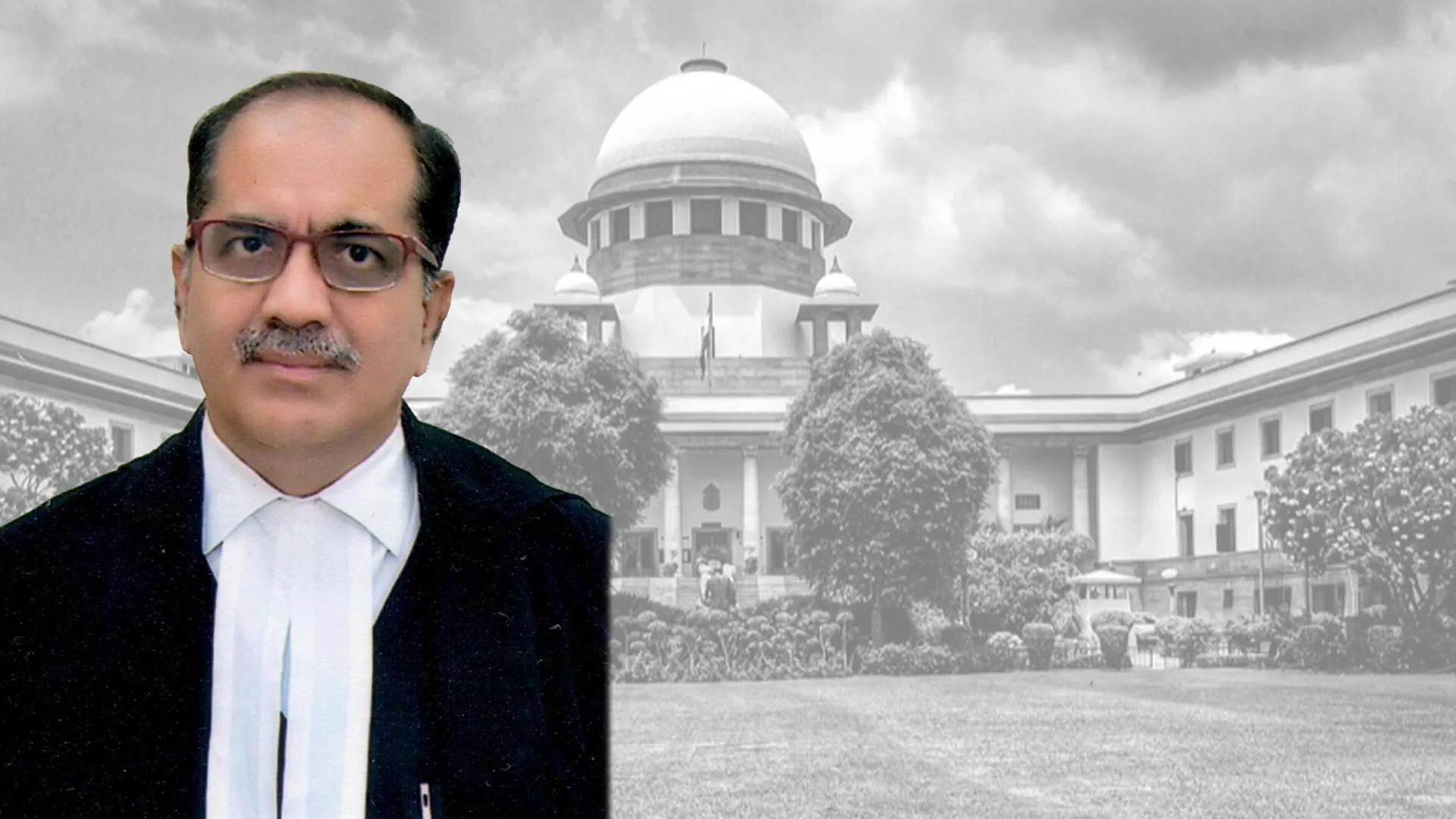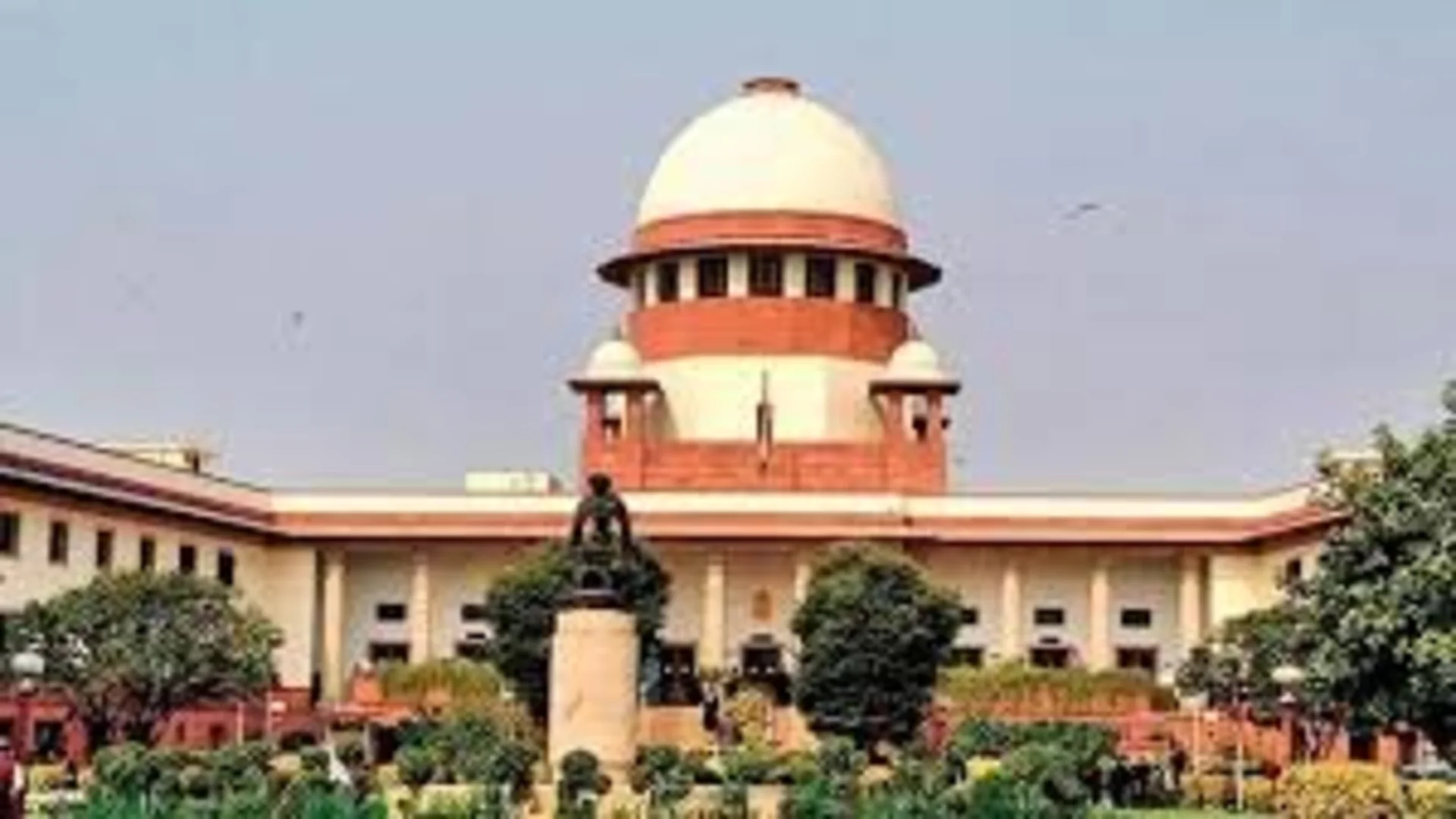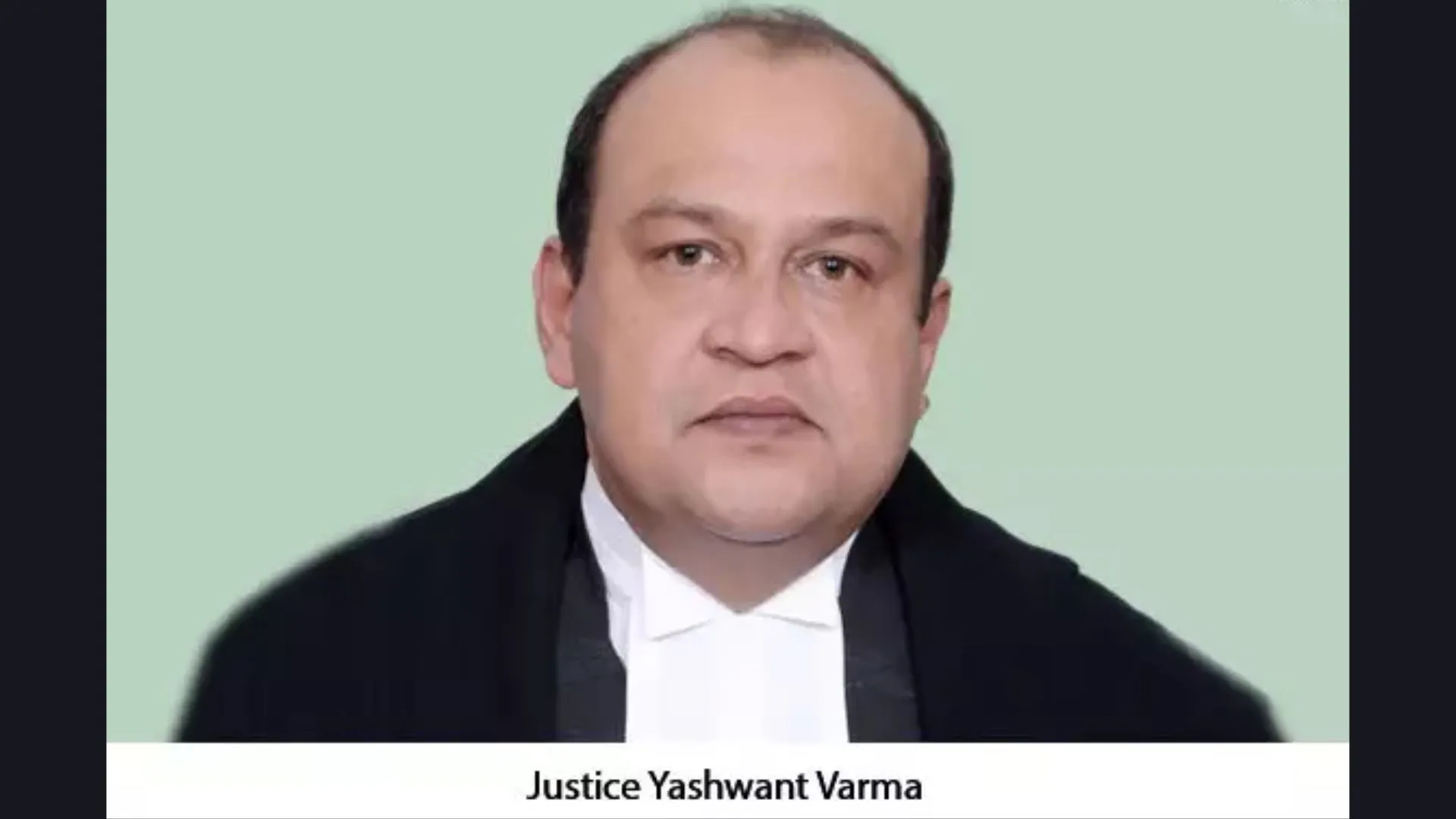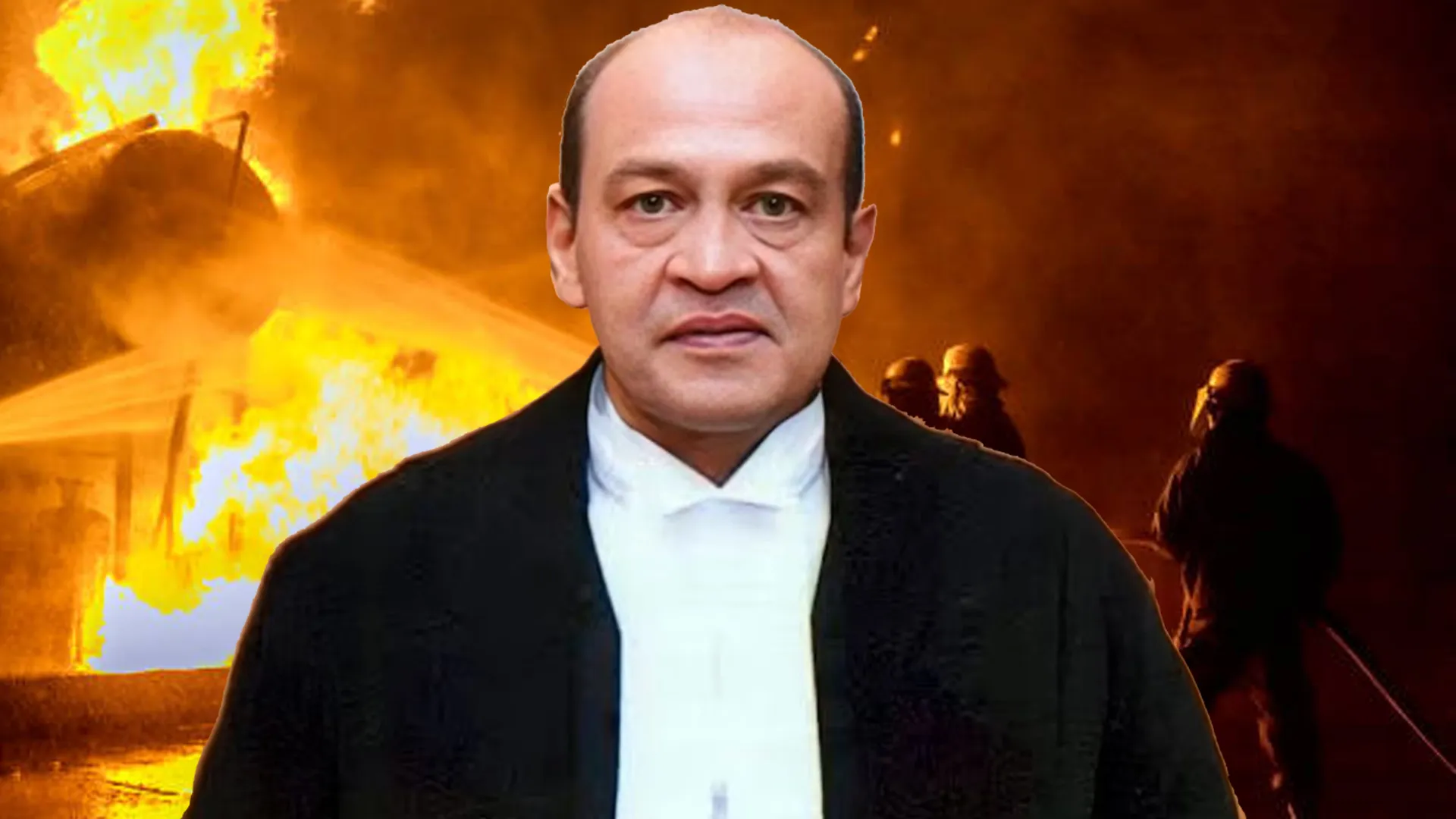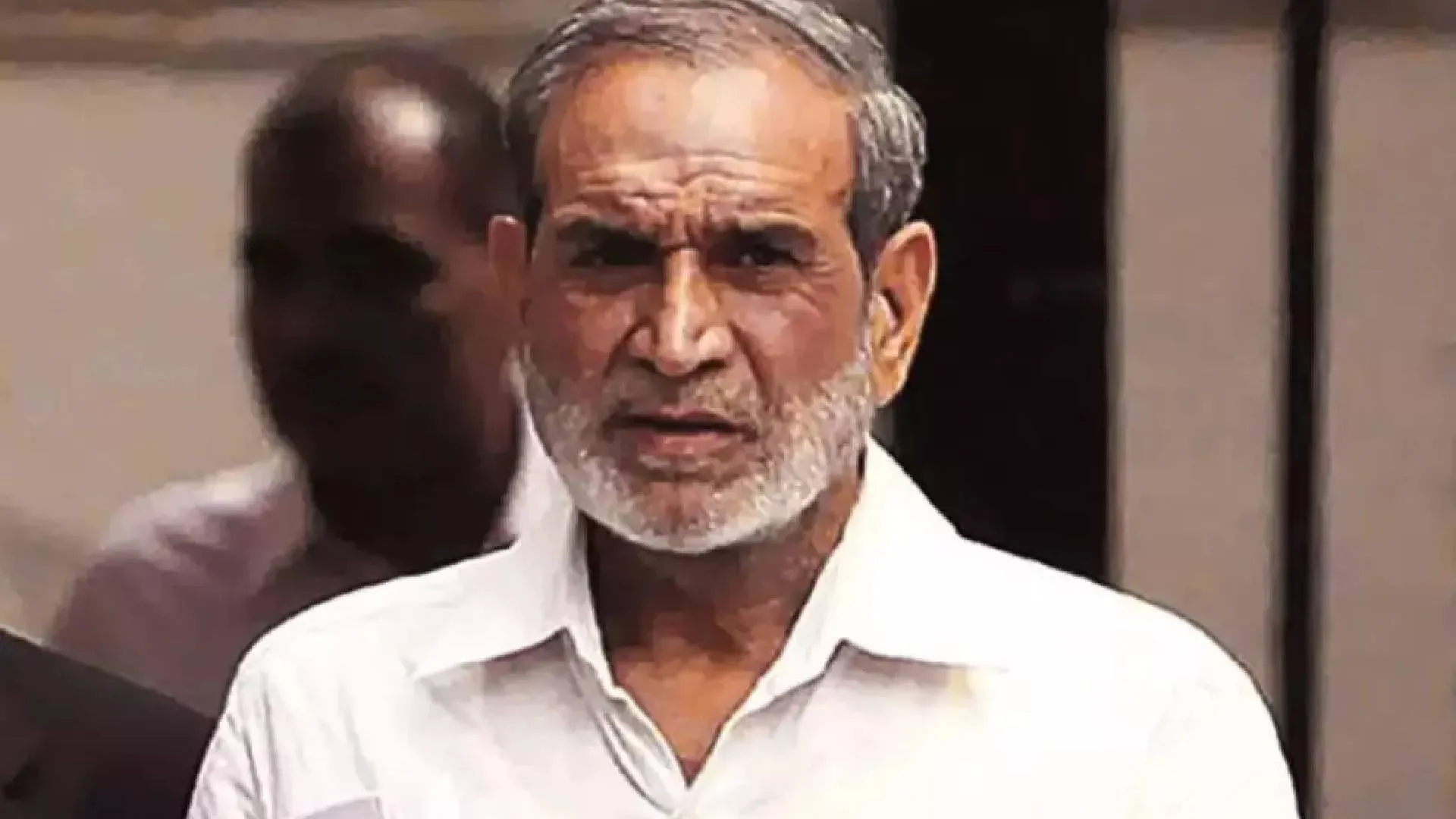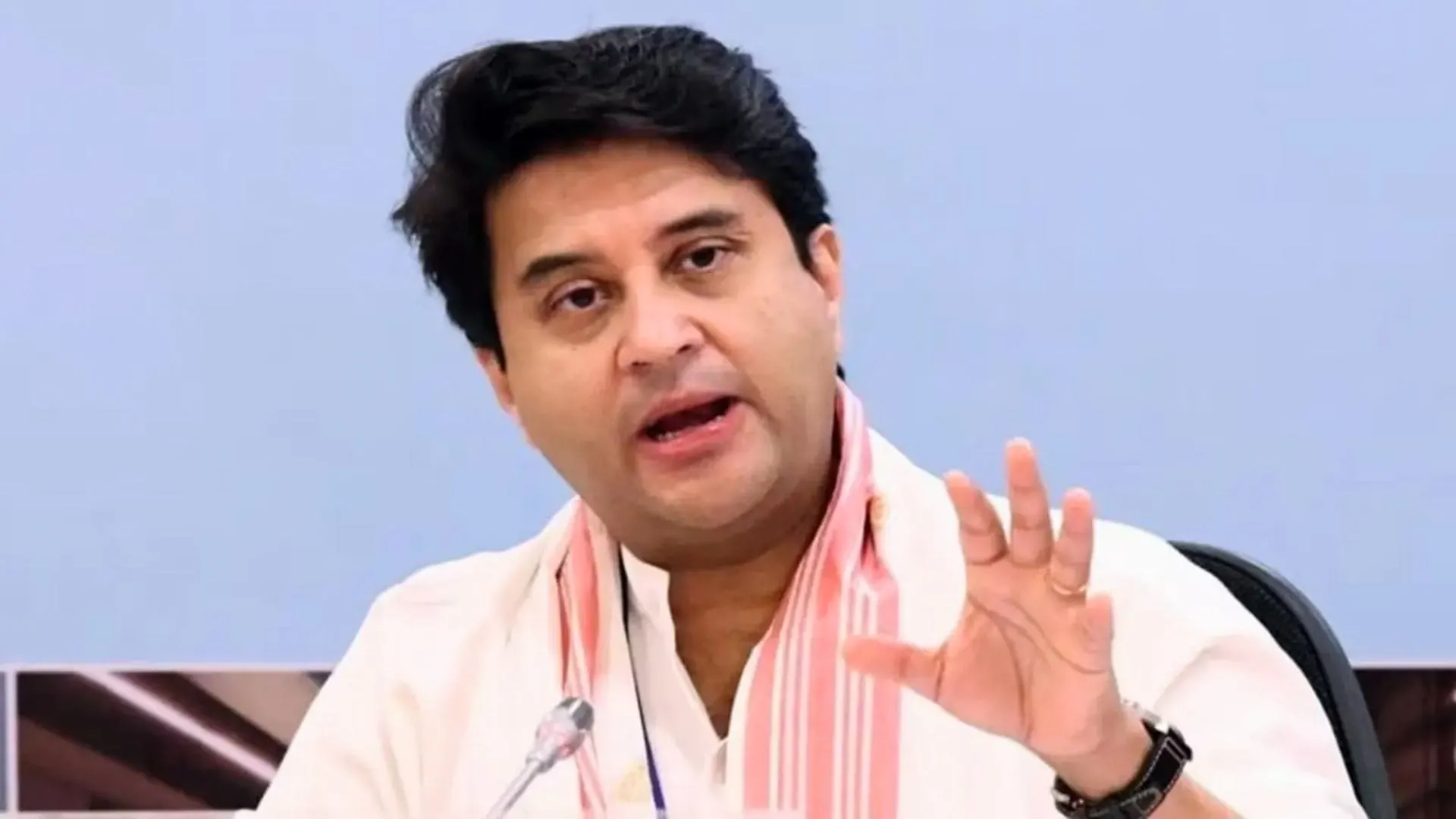BEFORE the Supreme Court of India, on a regular basis, petitions are filed seeking exercise of power by it under Article 142 of the Constitution of India to dissolve the marriages which are totally unworkable, emotionally dead, beyond salvage and thus, have broken down irretrievably. Under the existing framework of law in India, ‘irretrievable breakdown of marriage’ is not recognized as a ground for obtaining a decree of divorce. Therefore, even in cases, for instance, where both the parties have been residing separately for over two decades; where custody of child is not in issue; where even though such situations exist but, one of the parties still does not give consent for divorce; the other party is constrained to approach the Supreme Court seeking divorce on grounds of irretrievable breakdown of marriage.
It is pertinent to note that as early as in the year 1978, the Law Commission of India in its 71st Report titled ‘The Hindu Marriage Act, 1955 – Irretrievable Breakdown of Marriage as a Ground of Divorce’ (“71st Report”) had examined this issue in detail and recommended amendments to be made in the Hindu Marriage Act, 1955 (“Hindu Marriage Act”) so as to make irretrievable breakdown of marriage as a new ground for granting decree of divorce. Accordingly, a Bill – the Marriage Laws (Amendment) Bill 1981, was brought in the Lok Sabha inter alia to amend the Hindu Marriage Act but, the Bill lapsed due to dissolution of the Lok Sabha. Till date, the said amendment has not been implemented. The consequence thereof is increase in hostile litigation between parties and increased burden on the Supreme Court. It is to be remembered that the Supreme Court is not a court for hearing regular appeals from the High Court but, is a court to decide constitutional issues of public importance.
However, in the absence of there being any specific provision for grant of divorce on the grounds of irretrievable breakdown of marriage, the Supreme Court is constrained to entertain such matters in those circumstances where “wedlock became a deadlock”.
COMPARATIVE ANALYSIS
The “irretrievable breakdown” theory was first introduced in New Zealand in the year 1920 by the Divorce and Matrimonial Causes Amendment Act wherein, a separation agreement for three years or more was made a ground for making a petition to the court for seeking divorce and the court had the discretion, whether to grant it or not. In the case of Lodder v. Lodder, 1921 New Zealand Law Reports 786, it was observed that the Legislature intended to consider the three-year separation period as sufficiently a good ground for divorce. It held that “when the matrimonial relation has for that period ceased to exist de facto, it should, unless there are special reasons to the contrary, cease to exist de jure also. In general, it is not in the interests of the parties or in the interest of the public that a man and woman should remain bound together as husband and wife in law when for a lengthy period they have ceased to be such in fact. In the case of such a separation the essential purposes of marriage have been frustrated, and its further continuance is in general not merely useless but mischievous”. It must be noted that in the aforementioned Act, the term ‘irretrievable breakdown of marriage’ was not defined as it was believed that every sick marriage had its own peculiar reason to be so and that there could be no fixed definition for it. Further, no guidelines were also laid down either by the Legislature or by the courts for exercise of discretion in such matters.
Under the Canadian Divorce Act also, “irretrievable breakdown of marriage” is clearly recognised as a ground for divorce, apart from the normal fault grounds of divorce such as adultery, cruelty, bigamy, etc. In the United Kingdom, the concept of matrimonial offence for divorce was replaced by the breakdown theory by the enactment of the Divorce Reform Act, 1969 whereby, a middle course was adopted. It made irretrievable breakdown of marriage the sole ground of divorce along with providing certain guidelines for obtaining evidence of breakdown. The Matrimonial Causes Act, 1973 (U.K.) allows for divorce to be obtained on the ground of irretrievable breakdown of marriage, if the court finds one or more of circumstances like – adultery, unreasonable expectation of cohabitation, desertion for at least two years, separation of two years in case of divorce by mutual consent, and a separation of five years if mutual consent is not present.
In India, the Special Marriage Act and the Hindu Marriage Act were enacted to govern marriages and divorces in the country. Over the years, the provisions of the said Acts have proved to be insufficient to deal with the situations where the marriage between the parties have broken down irretrievably. Despite the fact that the Law Commission of India had earlier submitted its Report in 1978 as well as subsequent judgments of the Supreme Court in Ms. Jorden Diengdeh vs. S.S. Chopra,AIR 1985 SC 935 and Naveen Kohli vs. Neelu Kohli,AIR 2006 SC 1675 where, necessity to introduce irretrievable breakdown of marriage as a ground for obtaining divorce was recommended, till date, nothing has been done.
MARRIAGE LAWS (AMENDMENT) BILL, 2010
In fact, in the year 2009 also, the Law Commission of India suo motu took up the matter and in its 217th Report titled ‘Irretrievable Breakdown of Marriage – Another Ground for Divorce’ (“217th Report”) recommended that ‘Irretrievable breakdown of marriage’ should be incorporated as another ground for grant of a decree of divorce. Pursuant thereto, the Marriage Laws (Amendment) Bill, 2010 (“proposed Amendment”) was introduced in Lok Sabha which proposed to insert Section 13-C to the Hindu Marriage Act thereby, making irretrievable breakdown of marriage as a separate ground for divorce under Hindu Marriage Act. The Bill introduced certain safeguards to protect the interests of the woman and children which may suffer as a consequence of the divorce granted on ground of irretrievable breakdown of marriage. The Bill proposed to add Section 13-D to the Hindu Marriage Act, whereby the respondent-wife was provided the right to oppose the petition on the ground that the dissolution of the marriage will result in grave financial hardship to her and that it would in all the circumstances be wrong to dissolve the marriage. Further, if the grant of divorce decree is opposed, then the court shall consider all the circumstances, including the conduct of the parties to the marriage and the interests of those parties and of any children or other persons concerned. Upon doing so, if the Court is of the opinion that the divorce shall result in grave financial hardship to the respondent and that it would be wrong in all circumstances to grant it, then the court shall dismiss the divorce petition, or stay the proceedings until arrangements have been made to its satisfaction to eliminate the financial hardship.
Another provision was added namely, Section 13-E which provided that the court shall not pass a decree of divorce under Section 13-C unless the Court is satisfied that adequate provision for the maintenance of children born out of the marriage has been made, consistent with the financial capacity of the parties to the marriage. The expression “children” would include minors, unmarried or widowed daughters not financial independent; and children with special physical or mental health conditions who require to be looked after and who do not have the financial resources to support themselves.
However, the said Bill also remained at ‘proposal stage’. Hence, the only recourse left for the parties to dissolve a dead marriage is to approach the Supreme Court. This has also left the discussion open for posing arguments for and against inclusion of irretrievable breakdown of marriage as a ground for divorce.
ARGUMENTS IN FAVOUR OF PROPOSED AMENDMENT
Before deciding as to whether the proposed Amendment is beneficial or not, the first step is to examine whether parties would want to continue in a relationship where there is total disappearance of emotional substratum. A dead marriage alive is more conducive to immorality and potentially more prejudicial to the public interest than the dissolution of the marriage bond. A dead marriage affects the mental health conditions of parties, welfare and growth of the child born out of wedlock, and leads to hostile litigation and harassment.
Under the existing framework of law, divorce can only be granted on the grounds as specified in Section 13, 13A and 13B of the Hindu Marriage Act. Section 13 provides for various grounds for divorces like cruelty, adultery, etc. is, thus, based on ‘fault theory’. Whereas, Section 13A deals with judicial separation and Section 13B provides for divorce on grounds of ‘mutual consent’. However, the aforementioned provisions does not at all deal with a situation where even though, the marriage has irretrievably broken down, still one of the spouses refuses to give consent for divorce. In such circumstance, should the parties be compelled to keep the marriage alive?
PROBLEM WITH ‘FAULT THEORY’
Under the “fault theory” of divorce, guilt has to be proven on the part of one of the spouse. The nature of the guilt being proved must pass the litmus test as prescribed by the law, and only then a decree of divorce will be granted. But, in such circumstances, sometimes proving the fault becomes difficult due to lack of evidence, non-production of evidence, etc. For instance, proving mental cruelty is very difficult. Hence, the burden to prove fault also make parties to engage in mud-slinging which brings the institution of marriage into disrepute.
Another limitation of the “fault theory” of divorce is that it requires both – an innocent party in need of relief and a guilty party against whom the relief is sought. No relief would be granted if it is found that both the parties are at fault. In such circumstances, a gradual shift from “fault theory” to ground of “irretrievable breakdown of marriage” will come to the rescue of the parties. For instance, in Rishikesh Sharma v. Saroj Sharma, (2007) 2 SCC 263 the Supreme Court after considering that the wife, who has been living separately for more than four decades, had instituted frivolous cases against the husband, observed that the marriage is dead from every angle and is impossible to revive and thus, no purpose would be served in keeping both the parties retained in marriage. Thus, it dissolved the marriage on the grounds of irretrievable breakdown of marriage.
DILEMMA OF ‘MUTUAL CONSENT’
Further, Sections 13(1-A) and 13B of the Hindu Marriage Act are insufficient to deal with all the situations pertaining to the matrimonial remedies. In this context, it is pertinent to understand the difference between obtaining a decree of divorce by mutual consent and obtaining a decree of divorce on the ground of irretrievable breakdown of marriage. The Law Commission of India in its 217th Report explained that ‘mutual consent’ requires the consent of both the parties and if one or the other does not cooperate, the said ground is not available. On the other hand, ‘irretrievable breakdown of marriage’ is a ground which the Court can examine and if the Court, on the facts of the case, comes to the conclusion that the marriage cannot be repaired/saved, divorce can be granted. The grant of divorce is not dependent on the volition of the parties, but on the Court coming to the conclusion, on the facts pleaded, that the marriage has irretrievably broken down. Thus, irretrievable breakdown of marriage as a ground for divorce comes as a possible recourse when both parties aren’t at consensus to obtain a divorce.
R. Srinivas Kumar v. R. Shametha, AIR 2019 SC 4914is a classic example of this kind. In this case, though, the husband and wife were living separately for 22 years but, the High Court dismissed the divorce petition filed by the husband on the ground that mental cruelty was not proved. The wife had also refused to give consent for divorce. The Supreme Court specifically held that separation of more than two decades was conclusive enough to prove that the marriage was irretrievably broken and even if, one of the parties does not give consent for divorce, under Article 142, it has the power dissolve the marriage. Hence, in the instant case, it proceeded to dissolve the marriage on payment of reasonable permanent alimony by the husband to the wife.
ARGUMENTS AGAINST THE PROPOSED AMENDMENT
Further, it is to be noted that the development of the “irretrievablebreakdown” theory occurred as a result of shift from the “fault theory” to “no fault theory” in divorce laws. Under Section 13B of the Hindu Marriage Act, divorce can be obtained by mutual consent without requiring one party to prove fault on part of the other. Additionally, under Section 13(1-A) of the Hindu Marriage Act, the parties may file for divorce if – (a) the parties don’t resume cohabitation after a period of one year or upwards after the passing of a decree for judicial separation, or (b) no restitution of conjugal rights happens between the parties for a period of one year or upward after the passing of a decree of restitution of conjugal rights. The Bombay High Court in Madhukar v. Saral, AIR 1973 Bom 55 observed that the enactment of Section 13(1-A) is a legislative recognition of the fact that if there has been a breakdown of marriage there is no purpose in keeping the parties tied together.
DIVORCE CAN ONLY BE GRANTED IN TERMS OF THE PROVISIONS OF HINDU MARRIAGE ACT
However, there have been many circumstances, where the courts have showed their reluctance in dissolving the marriage on grounds of irretrievable breakdown. Time and again, the courts have emphasized that since there is lack of legislative intent to introduce irretrievable breakdown of marriage as an additional ground for divorce, no divorce must be granted on such grounds by courts. In Reynold Rajamoni v. Union of India, AIR 1982 SC 1261 and Vishnu Dutt Sharma v. Manju Sharma, AIR 2009 SC 2254, the Supreme Court observed that when legislative provisions specify the grounds for granting a divorce, they constitute the only conditions on which the Court has jurisdiction to grant divorce. Granting a divorce on the ground of irretrievable breakdown, would mean adding a separate ground for divorce which can only be done by the legislature.
Irretrievable breakdown cannot be used as a magic formula to obtain divorce:
Also, another arguments against the proposed Amendment is that when the existing grounds for divorce aren’t proved, the concept of irretrievable breakdown of marriage shouldn’t be used as a magic formula to obtain a divorce decree. For instance, in cases, where the husband or wife utterly failed to prove grounds of cruelty, the Court held that the husband or wife will not entitled to a decree of divorce. In a country like India, where marriage is considered sacramental, allowing dissolution of the marriage in a light manner is unacceptable.
WELFARE OF CHILD IS OF PARAMOUNT CONSIDERATION
Other concerns raised were regarding welfare of child born out of the wedlock that is, whether he/she will be able to get the love and affection of parents in case the marriage is dissolved in a light fashion. For instance, in Hitesh Bhatnagar v. Deepa Bhatnagar, AIR 2011 SC 1637, the Supreme Court refused to grant divorce on ground of irretrievable breakdown of marriage in order to secure the future of the child born out of wedlock. Thus, divorce on such a ground becomes a disadvantage for the survival of the wife who is not financially independent and also, has the responsibility to fulfil the needs of the child born out of the marriage being dissolved.
NO ONE CAN BE ALLOWED TO TAKE ADVANTAGE OF THEIR OWN WRONG
Lastly, there are two other major grounds for opposing the proposed Amendment : firstly, it will allow the spouses to terminate the marriage at their will; and secondly, it will allow the guilty spouse to take advantage of his/her own fault. For instance in Chetan Dass v. Kamala Devi, AIR 2001 SC 1709, the Supreme Court refused to grant divorce on the grounds of irretrievable breakdown of marriage to the husband after observing that it was the husband who had meted out cruel treatment to the wife. Therefore, allowing the divorce in such circumstance would mean the husband is allowed to take advantage of his own wrong.
EXERCISE OF POWER BY SUPREME COURT UNDER ARTICLE 142 OF THE CONSTITUTION OF INDIA
Article 142 of the Constitution empowers the Supreme Court to pass such decree or order as may be necessary for doing complete justice between the parties in a cause of matter pending before it. Thus, the provision vests the Supreme Court with vast powers to issue any directions or order (irrespective of the fact whether the issue is covered by any legislative provisions exists or not) for the purpose of doing complete justice between the parties. Such an orders or direction is binding in terms of Article 141 of the Constitution of India. It is to be remembered that such a power is only vested with the Supreme Court and no other Court has similar power.
Talking about matrimonial matters, generally, the Supreme Court doesn’t exercise its power under Article 142 to dissolve the marriages. However, the recent trends have shown that where grave injustice is being caused; where parties are indulging in frivolous litigation, or where welfare of child is involved, etc. the Court has exercised its power and dissolved the marriage on grounds of irretrievable breakdown of marriage on payment of reasonable permanent alimony. In the landmark judgment – Anil Kumar Jain v. Maya Jain, AIR 2010 SC 229, the Supreme court held as under:
“(1) Although irretrievable breakdown of marriage is not a ground for divorce under Sections 13 or 13B of the Hindu Marriage Act, 1955, it can be applied to a proceeding under either of these provisions only if the proceedings are before the Supreme Court. Neither the civil courts or the High Courts can pass such orders.
(2) Only the Supreme Court in order to do complete justice, can by way of Article 142 of the Constitution, convert a proceeding under Section 13 of the Hindu Marriage Act, 1955, into one under Section 13B and pass a decree for mutual divorce, without waiting for the statutory period of six months.”
Since the year 1990, there are about 20 to 25 cases where the Supreme Court has exercised its powers under Article 142 to grant decree of divorce on the ground of irretrievable breakdown of marriage. But, in all such cases, power has been exercised with much care and caution, for the interest of both the parties to the marriage, and in exceptional circumstances only.
The purpose of exercising the power has been to put quietus to all litigations between the parties and to save them from further agony. It is pertinent to note that there is no straight-jacket formula which the Supreme Court applies for granting divorce on the grounds of irretrievable breakdown of marriage. It depends on facts and circumstances of each case. However, various judgments of the Supreme Court would show that the important facts which are considered while granting divorce by exercising power under Article 142 are:
Long period of continuous separation between the parties;
Numerous litigations initiated by parties against each other and which has been pending for years;
Harassment and mental agony being caused to the parties due to litigations;
No possibility of reconciliation or amicable settlement either through Court or through family members;
Interest of the child born out of wedlock. For instance, his custody, education, general welfare, etc.
Maintenance of the wife if she is dependent;
Alternate accommodation for the wife and the child born out of wedlock.
The judgment rendered by the Supreme Court in Naveen Kohli v. Neelu Kohli,AIR 2006 SC 1675 is a landmark judgment on this issue and is still being followed. In fact, relying upon the said judgment, in Sanghamitra Ghosh v. Kajal Kumar Ghosh, (2007) 2 SCC 220 and Sukhendu Das v. Rita Mukherjee, AIR 2017 SC 5092, the Supreme Court dissolved the marriage as there was total disappearance of emotional substratum. Therefore, in order to ensure that the parties may live peacefully in future, it put a quietus to litigation between the parties. This was also considered to be in the interest of the child. Also, in Satish Sitole v. Ganga, AIR 2008 SC 3093, the Supreme Court dissolved the marriage as both parties had been living separately for the past 14 years and there was no scope of any reconciliation despite the birth of a male child.
Increased burden on the Supreme Court and pendency of cases:
However, the effect of this is increased burden on the Supreme Court. It is in public knowledge that the courts in India are overburdened with cases and a matter instituted in a court takes years to get decided. As of September 2020, there are over 55,000 cases pending in the Supreme Court, 51 lakhs cases pending in the High Courts, and 3.5 crore cases pending in the subordinate courts across India. Considering the fact that the Supreme Court is not a regular court of appeal and a large number of cases are already pending, shouldn’t the Parliament implement the proposed Amendment?
After perusing the proposed Amendment and also, various judgments of the Supreme Court, as aforementioned, it is clear that both provide for adequate safeguard for protecting the interest of spouses and the child. However, in the absence of implementation of the proposed Amendment, the burden on the Supreme Court is unnecessarily being increased. There have been instances where though parties have not been residing together for more than a decade; all attempts of reconciliation failed; custody of child was also not in dispute even then, the Family Court or the High Court did not grant divorce on the sole ground that it is only the Supreme Court which can dissolve the marriage on grounds of irretrievable breakdown of marriage. Therefore, after spending years in litigation awaiting the judgment of courts below, the party ultimately is constrained to approach the Supreme Court. Such cases can be taken care of without approaching the Supreme Court if the amendment, as proposed, is implemented. It would save a lot of time and money of parties, prevent unnecessary harassment due to long-drawn litigations, and reduce the burden on the Supreme Court.
Conclusion:
Therefore, the time is ripe for the Parliament to implement the proposed Amendment and include irretrievable breakdown of marriage as an additional ground for divorce in the Hindu Marriage Act. This will ensure that the parties aren’t forced to continue in a marriage which has broken beyond salvage with no possibility of reconciliation. Moreover, it is both – in public interest and in the interest of parties and their family members concerned to dissolve an emotionally dead marriage. The proposed Amendment, if implemented, would solve many problems such as:
No separate petition under Section 125, CrPC would be required to be filed for claiming maintenance;
No separate petition would have to be filed seeking custody of the child;
Before granting divorce, it would be seen that adequate protection is given to the parties to protect their financial and other interests;
Mud-slinging which leads to unnecessary and long drawn litigations will be avoided, and;
Such issues can be resolved in Family Court itself without approaching the High Court or the Supreme Court for that matter, thus, reducing the burden on them.


